Sometimes when we fish with friends, we foster an unspoken, cordial competition. You know, the “first fish, most fish, biggest fish” thing. Being successful at fly fishing means you’re likely doing something right—it’s a technical craft, for the most part, and doing it well is usually important to success. It feels good when you’re doing everything right, when you’ve put together a diverse set of elements into a single successful act, and it’s nice to measure your good fortune against others, particularly if they’re solid anglers.
And success, of course, breeds confidence, which leads you to honestly believe that every cast and every drift or swing will result in the biggest fish of the trip.
When you're fishing Patagonia’s sprawling, high-desert Rio Limay, take all that crap and throw it out the window. This is a river whose sheer size and volume leave so much to chance that, in most instances, it doesn’t matter one lick who’s on the business end of the fly rod.
What can pay dividends is being on the river with someone experienced enough to read such an immense torrent and put you on the right water for the fish you’re seeking. For the Limay’s massive brown trout, it’s absolutely vital to get a fly—usually a gaudy articulated streamer that wiggles seductively in the river’s varied currents—to the bottom and to the bottom as fast as you can.
As we pushed out into the mosh pit of currents and seams that comprise the Limay that first day, it was me manning the front seat of the Patagonia River Guides (PRG) drift boat. But, it could have been Bobo the trained chimpanzee casting the heavy shooting head and 200 yards of running line instead of me. Perhaps Bobo, being a relatively novice angler, would’ve struggled a bit with the unwieldy outfit, but still, it certainly didn’t require decades of angling experience load the stiff 6-weight rod and send the line flying perpendicular to the boat and into the drink. And, it sure didn’t require any skill on my part to sink a bright yellow double-hooked Clouser to the bottom of the river.

And when the line swung through the current and straightened out well downstream of the boat’s bow, I knew right away that if we were to latch into the any of the Limay’s bestial browns, it would be a matter of good guiding and good luck.
Fortunately, that first day, we had both.
Within just a few minutes of our first casts, I was sure that I’d managed to drag the heavy shooting line across the river’s bottom and wrap it around a rock some 20 feet down. Until that rock moved.
The day before we hit the Limay, sitting outside on the front porch of a sprawling Argentine estancia, whiskey in hand, I was gluttonous enough to start making comparisons between my beloved trout and the burly saltwater fish that I had traveled to places like Mexico and the Bahamas to chase—fish that pull so hard and dive so deep that fly lines disappear and yield to backing in seconds flat. Apples and oranges, really, but the brown-liquor fueling my tirade compelled me to utter the phrase “trout are sissies,” much to the disgust of my companions that night.
As I realized that my fly line was latched to something other than Patagonian bedrock and as my fly reel turned into an aluminum blur, I recalled those words leaving my mouth, and I was immediately filled with regret and gratitude at the same time. Regretful for verbally shaming the fish that taught me damn near everything I know about rivers and fishing and the ingredients that make both functional and productive, and grateful that the fates chose to correct my heresy by connecting me with the fish of a lifetime rather than punishing me by plunging me into a slump of fishless penance that, quite frankly, I very much deserved.
Fifteen minutes later, with arms sore and worn, I boated the largest brown trout of my life—a 25-incher armed with burly shoulders and that kyped jaw that inspires anglers the world over to spend their time and their fortunes in pursuit. It hit the gaudy fly on the swing, and our guide, Peter, steered the boat to some calmer water and helped me net the beast.

We took our time, carefully snapping pictures and reviving the fish. We exchanged obligatory handshakes and high-fives, all the while grinning and after our celebration, we hopped back into the boat, pushed off and set back to work. As we drifted, I thought to myself that this is why I had come here—to touch a beast so majestic, so hungry and angry—and I was sated.
And then it happened again.
The line straightened out on the swing, pulled tight and all hell broke loose. Only this time, the fish at the end of the line moved so furiously, that I thought we might have been caught in some unseen whirlpool, like the bottom of the river had opened up, and something was pulling my fly line into a watery black hole that led to the core of the planet.
And then we saw the fish. It was gargantuan.
Like that old Gary Larson cartoon, I stood there in the boat’s bow like a simpleton mutt that finally caught its own tail.
“Now what?”
If trout are sissies, this Limay brown and its brethren refuse to join the union.
Peter again coaxed the boat to calmer water near shore, but this time he instructed that we’d get out of the boat and try to bring the fish to the net on foot. And that was no easy task, frankly. I stumbled out of the boat, drunk on a cocktail of glee, success and luck. I trundled my way through the thigh-deep Limay to where I could stand and do battle without fear of being swept down river. Between line-peeling runs and furious head shakes, I managed to get the fish on the reel and slowly bring it into shallow water. There, Peter stood with the net, and he safely secured the giant fish in the mesh.
Peering over the lip of the net, I laid eyes on the most impressive fish I’d ever seen, bar none. When Peter stretched the tape from tip of the pinched fins to the tip of the kyped jaw, the immense fish measured just a hair over 27 inches.

I was giddy. Chad was giddy. Peter was giddy. And the Limay, racing downstream through the dry, taupe desert landscape on the eastern fringes of Patagonia, seemed to shrug and whisper, “Aw, shucks,” as if it gave up fish like this to fortunate anglers all the time.
As we glided down the Limay the rest of that first day en route to our campsite for the night, we didn’t touch another fish. We spent the entire day trying, though, heaving the heavy shooting heads into the drink and swinging big flies through the Limay’s depths.
Just before we got to our camp that evening—a posh set-up tucked into a willow oasis in the dry, desert landscape—Peter twice oared the boat through a very fishy run up against a bushy bank that he was certain contained a brown worth bragging about. But if it did, it remained tight-lipped, and as dusk turned to dark, we regretfully beached the boat for the night.
Catching two giant brown trout within just minutes of each other had left me glowing and pleasantly satisfied and that night, I realized that I might have ruined my trout fishing for the foreseeable future. I’ll likely never match such a feat again, I reasoned.
As we reflected on the day’s events, Chad said, “I don’t care who caught those fish—I’m just glad I was in the boat to see it with my own eyes.”
Trout are not sissies.
Fish camp
You might honestly come to believe that robust malbec wine flows from the taps in Argentina. It seems as if, whenever you want a taste, there’s a bottle handy to suit your needs. In reality, it comes from the Mendoza District’s myriad vintners, where it is bottled with care and then delivered gratuitously throughout the country.

Argentina’s signature wine was abundant at every shore lunch we enjoyed throughout our stay, but perhaps never more so than when Peter guided the drift boat to the bank our campsite — part of PRG's 'Unplugged' program— and our home for the night after our first day spent chasing the Limay’s big browns.
Among the collection of outfitter tents spaced throughout the willows that lined the river’s banks, a table boasting several bottles of wine rested, its empty glasses soon to be filled by bone-tired anglers. Alongside the stock of malbec was another table, loaded with fine appetizers and perhaps finest mobile collection of brown liquor in the southern hemisphere.

Dinner—a bounty of perfectly cooked Patagonian red meat, potatoes and grilled fresh vegetables—served on a white-linen clad table within the large dining tent, was washed down by still more wine. Then we propped ourselves in front of a bonfire, where the junior high schoolers in all of us erupted at ribald jokes and stories of lost trout. There, amid the glow of the fire, we enjoyed one of those seemingly perfect moments that only come when the right amount of red meat, alcohol, wood smoke and fishermen mix together.
After a fashion, we realized that another day lay ahead, and that maybe, just maybe, a few more of those Rio Limay krakens were resting up for dawn, when they might be willing to chase a big streamer as it swings by in the rushing, green waters of the river. We tipped our glasses once more, drained them and wandered off to our sleeping tents, where warm cots awaited tired bones.

Back on the water
I remember as a kid the sleepless nights that led to pre-dawn mornings at my grandfather’s house, loading the trunk of the car with fishing gear and heading off into the dark on what was sure to be a grand adventure. And sure enough, when the sun peeped out, awakening me from my passenger-seat slumber, I’d find myself surrounded by mountains, driving some skinny gravel road along a trout stream high in the Colorado Rockies.
Waking up in the tent situated along the fabled Rio Limay deep in the Patagonian desert, I felt that same, child-like anticipation wash over me as I lay there my posh cot in the middle of nowhere. “I’m going fishing today, and I can’t wait,” I thought.
When we launched the boat, the sun had yet to poke over the steppe to the east, and every sound was amplified by a light fog that had settled over the river. Every booted foot rubbing on the boat bottom sounded like a depth charge, and as we peeled line from our reels in preparation for the day’s hunt, the reels screamed in protest.
Our guide for the day, Santos, prepped us for the first run of the morning—the same run we fished the night before with no luck. Chad took the front seat of the boat this day, and I decided to just sit and watch a bit as Santos guided the boat into the current. The light was still low as Chad launched his first couple of casts up against the willows—the kind of light we all crave when we’re chasing brown trout back home under autumn skies.
It didn’t take long.
Chad’s line pulled tight on the swing and what had to be another massive brown rocketed out from under the willows, peeling running line from Chad’s 6-weight reel as it cruised downstream on its way to the Rio Negro and the chilly South Atlantic.
“There’s literally nothing I can do,” Chad said, seemingly torn between cranking the drag down just a hair or palming the reel to slow the Peterbilt that was dead-set on reaching the salt.

Santos set the stage for us, positioning the boat so I could get out and so Chad could battle the fish from elevation in the bow of the boat. And it was a battle, one I’m sure Chad relives often. The fish would come close, but not close enough, and for the first 10 minutes of the fight, I honestly had no idea how big it was.
“Maybe 24?” I asked Santos from where I stood, judging the bend in Chad’s rod and factoring in the faster water from which the fish chose to fight. Santos shrugged. He was as curious as I was, apparently. He’d dropped anchor on the boat and was moving downstream, net in hand.
Chad continued to keep the pressure on, and the fish continued to run and take line, seemingly at will. From on the boat looking down, he got his first look at the fish.
“It’s bigger than 24,” he said. “I think it’s a lot bigger.”
He managed to swing the fish into shallower water, and I got my first glimpse. But just like that, the fish peeled another 30 feet of line off Chad’s reel and was back in the current, stubbornly refusing to come the net.
I looked at up at Chad, and he’d switched the rod from the right hand to his left, shaking the pain out of his fingers and wrist as he patiently faced down the big trout. And finally, after swapping the rod from hand to hand a couple more times, the fish came close enough to Santos to confidently slide the net under it. As he dragged the net closer, I came in for a look.
Much like the day before, as we peered over the lip of the net and inspected our catch, I found myself marveling at what we had drawn up from the depths of the river. And for the third time since we put in the morning before, I told my companions “That’s the largest brown trout I’ve ever seen”—immediately wondering how many more times I’d make such a definitive statement while fishing the Limay.
In his accented English, I heard Santos whisper, “Me too."
Arms worn from 20 minutes of pulling back against the tractor of a trout that rested in the net and still pulsed by adrenaline, Chad’s hands trembled as he reached into the net to help Santos tape the fish. And the tape just kept stretching until, finally, from tail to nose, the kype-jawed, razor-mawed brown topped out at ... 30 inches.
And, just like Chad the day before, I looked up and smiled.

Patagonia is an immense and diverse place, and the Limay is but one of many trophy trout rivers that course through its vibrant landscape. While some rivers flow beneath the rainforest canopy tucked up against the Chilean border, and still others flow slow and clear through scenic mountain canyons, the Limay is the master of them all. It’s a tailwater through the stretch we fished, and its productivity might be unmatched anywhere on earth.
From the massive browns that chased streamers in the deep, green depths, to the tail-walking rainbows that hit big, fat, foam Chernobyls and drifted nymphs, the Limay is likely the most dependable place in northern Patagonia to chase and find trophy trout.
We didn’t see another big brown that last day on the river, and, frankly, we grew tired of throwing the heavy lines and gratefully switched to casting fat dry flies trailed by droppers to an untold number of 20-inch rainbows. While the browns pulled like diesels, the rainbows leaped from the water time and time again, spurring the “oohs” and “awwws” one might expect from a fireworks display.
As we ended the float the second day, I remember looking at Chad and saying, “I’ll never forget this. Not as long as I live.”
Chad grinned.
“That’s the point, isn’t it?”
If You Go
Choosing a Lodge
The "unplugged" program from Patagonia River Guides is one of the most unique angling programs in all of Patagonia. Certainly, the grand tour of the region's estancias should rank high on the bucket list of any serious trout angler, but this experience is tough to beat ... and the Rio Limay is very likely the best "big-fish" river in the region. Great fishing. Surprisingly comfortable "camping" accommodations. Great food and drink. And... you're in Patagonia. What's not to love.
When to Go
The Rio Limay is a big, sweeping river — it's hard to make realistic comparisons to well-known North American rivers. But, like any brown trout destination, it's best visited in the fall, when the biggest of the big trout are staging to spawn and very territorial. In the Southern Hemisphere, that's March and into early April.
How to Get There
From several major U.S. hubs, Buenos Aires is a non-stop flight. From there, anglers will transfer from the city's international airport to its domestic airport, and catch a flight to San Martin de los Andes. Once there, your Patagonian adventure begins.





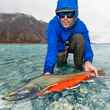
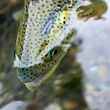



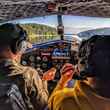
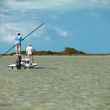



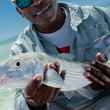




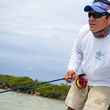




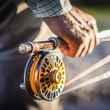




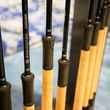
Comments